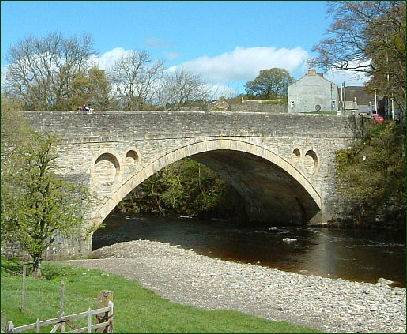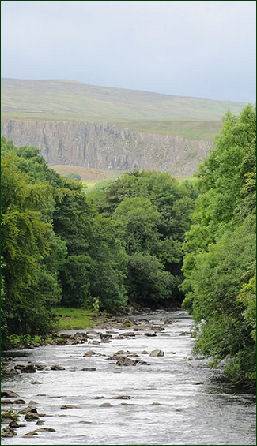Middleton-in-Teesdale
OS Grid ref-
 Middleton-in-Teesdale is a large village, situated between Eggleston and Newbiggin, a few miles to the northwest of Barnard Castle.
Middleton-in-Teesdale is a large village, situated between Eggleston and Newbiggin, a few miles to the northwest of Barnard Castle.
 The settlement is surrounded by the North Pennines Area of Outstanding Natural Beauty (AONB) and is located on the Pennine Way about nine miles from High Force, a superb waterfall on the upper course of the river Tees.
The settlement is surrounded by the North Pennines Area of Outstanding Natural Beauty (AONB) and is located on the Pennine Way about nine miles from High Force, a superb waterfall on the upper course of the river Tees.
The attractive village lies within an area of the Moors dominated by Scots Pine. Kirkcarrion, which lies to the south, is one of Teesdales major Bronze Age burial sites, a copse of pine trees surrounded by a stone wall, on a hilltop, the trees covering a tumulus said to be the burial place of a Bronze Age chieftain.
The original settlement became a small, market town and further expanded in the early part of the nineteenth century when the London Lead Company moved its northern headquarters from Blanchland to Middleton. Its days as a company town are still evident by the architecture of buildings such as Middleton House, which was formerly the company's headquarters. And the School, now an outdoor centre, as well as a number of company houses. It also served as the terminus for a railway line that ran from Barnard Castle, until this was closed as part of the Beeching Axe.
At the cattle market, on the south side of the river, local farmers sell their sheep and cattle. Special sales of Swaledale rams attract buyers from far afield. he Church, which is dedicated to St. Mary the Virgin, occupied a site on the rising ground north of the village.
The Church of St. Mary the Virgin
From the numerous fragments of ancient grave-covers and a small portion of zigzag moulding built into the north aisle, it is evident that there was a church standing here of about the date 1160 or 1180. The later church, which was principally in the Late Decorated style, was pulled down in 1876, and the present one built in the same style. The Font situated at the west end of the nave, is probably of medieval date, probably late fourteenth or fifteenth century. The building also contains a series of eighteen cross slabs, five of which are complete, most of which had been incorporated in the fabric of the medieval church.
St Mary's Middleton is fortunate to have a historic bell tower containing three ancient bells. A further point of interest is that the tower is separate from the church and was built alongside the former medieval church on the site. The oldest bell is dated 1557.
